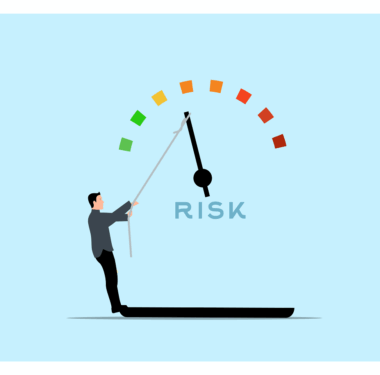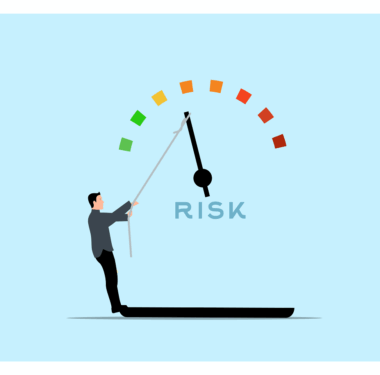Regulatory Compliance Challenges in Supply Chain Risk Management
The world of supply chain finance is increasingly complex, requiring businesses to navigate numerous regulatory compliance challenges. As globalization enables companies to source materials and services internationally, their risk exposure significantly increases. Compliance with regulations from various jurisdictions can prove daunting, especially given the inconsistencies between legal frameworks. Companies that fail to align their practices can face hefty fines, operational disruptions, and reputational damage. To effectively mitigate these risks, businesses must cultivate a compliance-oriented culture throughout their supply chains, engaging all stakeholders. This includes training employees on relevant regulations and investing in compliance technologies that can automate monitoring processes. By embracing a proactive approach, organizations can identify potential compliance gaps before they escalate into serious issues. It is essential to keep abreast of regulatory changes, which often occur rapidly and unexpectedly. Thus, companies should prioritize flexibility in their policies and processes to adapt as required. Ultimately, navigating compliance successfully is not merely about avoiding penalties; it’s an opportunity to bolster trust with partners, protect brand integrity, and maintain a competitive advantage in the market.
Risk assessment forms the backbone of effective supply chain management, and regulatory compliance is a significant element in this process. Companies must systematically evaluate their supply chains to identify potential weak points in compliance that can cause disruption or legal repercussions. Regular audits and assessments help organizations understand their compliance landscape, ensuring that they meet local and international standards. Employing data analytics tools can provide insightful automations that streamline compliance checks, ultimately saving time and resources. Moreover, effective communication channels across the supply chain enhance transparency, allowing for real-time updates on compliance-related activities. Establishing clear guidelines for suppliers and contractors ensures that all parties understand their roles in managing compliance. Companies should consider developing strategic partnerships with regulatory bodies to gain insights into compliance expectations and improve their practices. By fostering these relationships, organizations can stay ahead of potential regulatory changes, thereby minimizing risk. Additionally, organizations might explore the procurement of insurance policies specifically designed for compliance-related events, which serve as a financial safety net during regulatory challenges. Proper planning and adherence to compliance can transform risk management into a competitive advantage that enhances overall business performance.
The Role of Technology in Compliance Management
Innovative technologies play a crucial role in helping organizations effectively manage compliance within their supply chains. Cutting-edge solutions like AI, blockchain, and data analytics are transforming traditional compliance practices. For instance, AI-driven platforms can analyze vast data sets to detect compliance anomalies, allowing organizations to quickly address potential risks. Blockchain technology introduces a high level of transparency and traceability, making it easier for stakeholders to track compliance throughout the supply chain. Maintaining accurate records and ensuring that documentation is readily available reduces the likelihood of errors or oversights that could lead to compliance issues. Moreover, automating compliance processes through sophisticated software minimizes manual errors while providing companies with a structured approach to managing their compliance obligations. Such tools can also facilitate internal training programs that educate employees on compliance best practices. Consequently, empowered employees are better equipped to recognize issues and respond accordingly. As compliance demands evolve, businesses must remain agile and leverage technological advancements that can keep them compliant with new regulations. Adopting these technologies not only helps to maintain compliance but also enhances overall operational efficiency.
One significant challenge in supply chain compliance is managing multiple regulations across different regions. Each country may impose unique standards, and staying informed about these variations can be overwhelming for organizations. To counteract this issue, companies should conduct comprehensive research and keep a database of regulatory requirements per region. A centralized compliance management system can assist organizations in tracking regulatory updates and ensuring that all relevant departments are alerted to new changes. Regular training sessions on these standards are also essential to ensure that employees are aware of their responsibilities. Furthermore, partnering with local legal firms or compliance consultants can provide valuable insights, helping organizations navigate complex regulations more effectively. These experts can also assist with the development of compliance strategies tailored to regional requirements, alleviating some of the burdens on internal teams. To foster a culture of compliance, organizations must emphasize its importance, showcasing the need for dedicated resources and training. By benchmarking practices against industry leaders, companies can improve their compliance performance, gain competitive advantages, and reduce regulatory risk. To succeed in today’s global marketplace, understanding regulatory compliance complexities is fundamental for operational sustainability.
Supplier Relationships and Compliance
The relationship between organizations and their suppliers is another critical aspect of regulatory compliance. In many cases, businesses heavily rely on third-party suppliers to meet their service and product needs. Therefore, it is crucial for companies to ensure that their suppliers adhere to the same compliance standards. Regular supplier assessments and audits can help identify potential risks associated with non-compliance, enabling firms to act proactively. Firms employing stringent supplier selection criteria based on compliance readiness can significantly reduce risk within their supply chain. Creating a clear communication strategy regarding compliance expectations can further reinforce this relationship, ensuring suppliers understand their role. Additionally, organizations should consider providing resources and training to help suppliers align with regulatory standards. This cooperative approach can foster trust and loyalty while enhancing overall compliance efforts within the supply chain. Contracts should clearly outline compliance responsibilities and consequences of non-compliance to protect both parties. These measures ensure that all stakeholders maintain high compliance standards, fostering a healthier supply chain ecosystem. Transparent relationships can ultimately promote better risk management and more resilient supply chains, leading to improved operational success.
As businesses navigate the intricate landscape of supply chain compliance, collaboration plays a vital role in addressing regulatory challenges. By fostering partnerships with compliance professionals and industry experts, organizations can learn best practices and remain informed about evolving regulations. Participating in industry forums and organizations can further enhance knowledge sharing, providing companies with access to valuable networks that can inform compliance strategies. Continuous education and training programs can equip employees with knowledge on the latest compliance requirements, empowering them to tackle challenges effectively. Companies can benefit significantly by benchmarking their practices against competitors and industry leaders, identifying areas for improvement that enhance overall compliance. Involving employees in identifying compliance risks and solutions allows for better buy-in and accountability. Organizations should also build feedback loops where employees can voice concerns and share compliance-related insights. This fosters a culture of collaboration that prioritizes compliance and leverages diverse perspectives for innovative solutions. As a result, businesses can adapt to changing regulatory landscapes more effectively, leading to improved risk management and enhanced compliance across their supply chains.
Future of Regulatory Compliance in Supply Chain Management
The future of regulatory compliance in supply chain management is marked by increasing complexities and demands. As globalization continues to expand supply chains across borders, the need for robust compliance strategies becomes more pressing. Companies must proactively anticipate regulatory shifts and adapt their compliance processes accordingly, ensuring they remain competitive. The growing trend of sustainability will also impact compliance requirements, as organizations will need to demonstrate social responsibility and environmental stewardship. As governments enact more stringent environmental regulations, businesses must prepare to navigate these evolving landscapes. Investing in new technologies will be key in staying ahead of the curve, enabling automated compliance checks and reducing manual workload. Furthermore, companies must embrace an agile compliance framework, allowing them to pivot quickly when faced with regulatory changes. Collaboration with stakeholders, suppliers, and industry experts will remain essential in staying informed about the latest trends and regulations. Empowering employees with knowledge and resources will foster a culture of compliance that prioritizes adherence to regulations. With the proper strategies in place, organizations can turn compliance challenges into opportunities that drive growth and innovation in their supply chains.
In summary, effective supply chain risk management hinges on overcoming regulatory compliance challenges. Businesses can navigate the complexities of multiple regulations, foster strong supplier relationships, and leverage technology to create robust compliance strategies. As the regulatory environment continues to evolve, firms must remain vigilant, continuously adapting to new standards and requirements. Collaboration with compliance experts, open communication with employees, and proactive risk management practices are essential to maintaining compliance. Training initiatives will empower employees to understand their roles in compliance effectively. Ultimately, organizations that prioritize compliance not only mitigate risk but also enhance their operational resilience and reputation. Continuous improvement and a commitment to compliance can lead to sustainable business practices that benefit all stakeholders. Building a compliance-focused culture within the organization ensures that employees are aligned with the company’s goals. By embracing these strategies, companies can develop a competitive edge that sets them apart in the market. The dynamic landscape of supply chain risk requires agility, innovation, and a comprehensive understanding of regulatory compliance. Strong leadership and commitment to compliance will drive success in managing supply chain risks.





